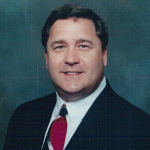
(December 8, 2015): Since the passage of the Patient Protection and Affordable Care Act of March 2010[1] (ACA) and progeny such as the HITECH Act [2], enforcement efforts have been better funded and consequently, better staffed. The enactment of HIPAA in 1996 [3] and the Balanced Budget Act (BBA) of 1997 [4], further expanded the OIG's sanction authorities and scope of current CMP and exclusion authorities beyond programs funded by the Department to all "Federal health care programs." Further, on May 31, 2011, CMS published guidance to providers regarding the enforcement of ACA Section 6501.
As the ACA requires:
Termination of Provider Participation Under Medicaid and CHIP
Section 6501 of the Affordable Care Act, Termination of Provider Participation Under Medicaid if Terminated Under Medicare or Other State Plan amends section 1902(a)(39) of the Social Security Act and requires States to terminate the participation of any individual or entity if such individual or entity is terminated under Medicare or any other Medicaid State plan. (emphasis added) [5] On February 2, 2011, the Centers for Medicare & Medicaid Services (CMS) published the final rule implementing this provision, applicable to terminations occurring on or after the statutory effective date of January 1, 2011 [6].
Subsequently, the U.S. Department of Health and Human Services (HHS) Office of the Inspector General (OIG) is now engaging a specialized task force to check for excluded individuals. 2015 Enforcement Actions demonstrate a much higher focus on, among other areas, reviewing providers against employing excluded individuals than in previous years. While this was a relatively easy compliance area to meet, since the OIG issued its Special Advisory Bulletin and amended its Self-Disclosure Protocol in May and June of 2013, it has since become a hotbed of government reviews, tighter restrictions, shorter compliance deadlines and higher civil monetary penalties. As a result, checking exclusion lists has moved from being one of the easiest compliance steps for a provider to undertake, to being an essential compliance step for every provider.
I. So many exclusion screening databases to check, so little time…
A health care provider, biller, or supplier must check both federal exclusion screening databases including, the List of Excluded Individuals/Entities (LEIE), and the System for Award Management (SAM), formerly maintained by the General Services Administration (GSA), and the currently 38 existing State OIG Medicaid exclusion databases on a regular basis. In New York and Texas, this means monthly (every 30 days), and the list of states adding the monthly requirement continues to grow. Some providers find it difficult to devote the staff and man-hours required to perform this task. Exclusion database review services, such as Exclusion Screening, LLC, allow these providers to perform the voluminous task of searching and documenting the employee searches on multiple state databases.
II. Formerly excluded employees or applicants must take affirmative steps to be taken off of the list of excluded individuals.
Employers should also be wary of employees who state they were previously excluded, but the exclusion period has run and they are no longer on the list. Simply stated, exclusions do not expire because there is no automatic reinstatement provision. A health care provider must apply to HHS OIG to be reinstated and to any State where they were previously excluded to be allowed to again participate. The individual must be approved and a written letter received before they can again work for a participating provider without breaking the law and risking penalty. As OIG’s website states:
Reinstatement of excluded entities and individuals is not automatic once the specified period of exclusion ends. Those wishing to again participate in the Medicare, Medicaid and all Federal health care programs must apply for reinstatement and receive authorized notice from OIG that reinstatement has been granted [7].
OIG has the authority to exclude individuals and entities from Federally funded health care programs pursuant to sections 1128 External link and 1156 External link of the Social Security Act External link and maintains a list of all currently excluded individuals and entities called the List of Excluded Individuals and Entities (LEIE). Anyone who hires an individual or entity on the LEIE may be subject to civil monetary penalties (CMP).[8] If an individual is excluded, and the employer participates in federal programs, the employee must be terminated. If an employee was excluded and states the period has run and they are no longer excluded, they must apply for reinstatement to OIG. Reinstatement is not automatic. OIG will send written notice if the application is accepted. The employee must wait until their name is removed from the exclusions list. Then the employee may again work for a provider who participates in a federally funded healthcare program. Finally, employers should remember that where an excluded individual provided services or items, directly or indirectly (as in administrative support) to Medicare, Medicaid or another federally funded health care program, such claims are tainted under the False Claims Act and may be subject to fines and penalties as previously stated.
An excluded party is in violation of its exclusion if it furnishes to Federal program beneficiaries items or services for which Federal health care program payment is sought. An excluded individual or entity that submits a claim for reimbursement to a Federal health care program, or causes such a claim to be submitted, may be subject to a CMP of $10,000 for each item or service furnished during the period that the person or entity was excluded (section 1128A(a)(1)(D) of the Act). The individual or entity may also be subject to treble damages for the amount claimed for each item or service. In addition, since reinstatement into the programs is not automatic, the excluded individual may jeopardize future reinstatement into Federal health care programs (42 CFR 1001.3002).
III. A partial list of OIG’s 2015 exclusion screening enforcement actions. Are you ready if audited in 2016?
In August 2015, HHS published a study which exposed a loophole in exclusion enforcement in Medicaid managed care programs. [9] It found that 25 States did not require providers who participated via managed care to be directly enrolled with the State. Texas requires every provider who treats Medicaid patients to enroll in the program.
Federal enforcement actions in 2015 increasingly assessed Civil Monetary Penalties against health care providers who employ excluded individuals. The number of enforcement actions and the amounts of penalties continue to trend upward. Note that enforcement is ongoing all over the country and for all types of provider entities.
This is particularly noteworthy for Texas providers, because in the HHSC Inspector General’s Quarterly Report to the Governor, September 21, 2015, new Texas Inspector General Stuart W. Bowen emphasized to Governor Greg W. Abbott that HHSC OIG is “clearing the decks” of old business and settling outstanding cases in anticipation of a concentrated effort beginning January, 2016 in increased effort in all areas, with a particular emphasis on the area of managed care fraud enforcement. This does not mean other providers will be neglected. Indeed, Mr. Bowen’s reputation as an overachiever at the national level means that exclusion screening will receive additional attention at the state level, whether in the managed care setting, or in the provider setting.
Providers should remember that claims tainted by utilization of services by an excluded individual date back to the date of hire and continue through the date of termination. The False Claims Act imposes a potential liability of $5,500-$11,000 and treble damages along with CMPs of up to $10,000 per violation. In § 3729(b)(1) of the False Claims Act, knowledge of false information is defined as being (1) actual knowledge, (2) deliberate ignorance of the truth or falsity of the information, or (3) reckless disregard of the truth or falsity of the information. That means a negligent failure to check the databases for excluded individuals will be regarded by the government as “knowledge” in the filing of false claims. The more immediate threat to providers comes in the form of Civil Monetary Penalties and return of overpayments, which must be made within 60 days from the time they are discovered and verified.
The following examples of enforcement actions taken by the federal government in 2015 illustrates that all providers and all areas of health care are subject to these increasing Civil Monetary Penalties. Avoiding this potential liability is relatively simply, though labor intensive. However, the cost of failing to do so has risen to the point where the survival of your practice or business may be jeopardized by your failure to do so.
02/04/15– A California hospital agreed to pay $121,316.55 in CMPs to settle OIG allegations it employed someone it knew or should have known was excluded from California Medicaid.
02/25/15 - A Denver, CO skilled nursing facility agreed to pay $242,434.92 in CMPs because it had employed an excluded nurse. No payment may be made by any Federal health care program for any items or services furnished by an excluded individual.
03/17/15 – A Wilkes-Barre, PA healthcare staffing agency agreed to pay $24,775.56 to settle allegations it employed an LPN who was excluded from any Federal health care program.
03/19/15 – A Skokie, IL home health agency employed an excluded nurse. As a result the HHA was excluded for three (3) years from participation in all Federal health care programs.
03/13/15– A northeast IN / northwest OH community-based health system entered into a $129,216.80 settlement agreement with OIG for employing an excluded lab tech.
03/31/15– A Farmville VA mission and rehabilitation facility paid $399,573.85 in CMPs for employing an individual it knew or should have known was excluded from Federal programs.
04/16/15– A Drexel, PA personal in-home care provider paid $69,130 in CMPs for employing an excluded individual for 18 months between July 2010 and December, 2011.
04/10/15 – a Winter Park, FL mental health counselor agreed to pay $120,000 in CMPs and was excluded for twelve (12) years from participation all federal health care programs for allegedly using an Orlando physician to submit claims for services not rendered or not supervised by a licensed physician.
04/27/15 – An Arlington, TX skilled nursing facility agreed to pay $70,000 in CMPs to OIG for allegedly employing an excluded licensed vocational nurse.
04/27/15 – An Beaumont, TX skilled nursing facility agreed to pay $163,740.54 in CMPs to OIG for allegedly employing an excluded individual.
05/13/15- A Maryland cardiology practice paid $134,506.47 in CMPs for allegedly employing an individual it knew or should have known was excluded from participation in Federal programs.
05/14/15 – A Houston, TX respiratory and sleep disorder specialist agreed to pay $152,821.07 in CMPs to OIG for fraudulent claims provided at a non-participating facility using its NPI number.
06/01/15– A Waco, TX managed care provider agreed to pay $100,000 in CMPs to OIG to settle allegations they employed 3 excluded individuals who provided items and services to Federal health care programs beneficiaries.
06/08/15 – A Dallas, TX area skilled nursing facility agreed to pay $77,772.08 to settle allegations it employed a certified nurse’s aide who was excluded from Federal programs.
IV. Final Remarks:
As a final item, one should remember that both the ACA and Texas Medicaid require that all providers have a compliance plan in place. Exclusion screening, while very important, is just one part of a comprehensive, effective compliance program that every provider is required to have. Staying in compliance is the single best and necessary means to minimize your risk of liability.
For additional reading and guidance regarding exclusions, reinstatement, and the potential penalties for employing an excluded individual, please reference HHS OIG’s Special Advisory Bulletins from September 1999 and May 8, 2013 [10]. For questions regarding creating a compliance for your health care practice or business, please contact Richard B. Pecore at Liles Parker, PLLC at (202) 298-8750 or rpecore@lilesparker.com .
Author

(In Memoriam 2024)
Join me on Thursday, December 10th for our free monthly webinar presentation where we will discuss what areas of government enforcement providers can expect HHS-OIG and Texas HHSC-OIG to focus on in 2016.
- [1] The Patient Protection and Affordable Care Act, Pub. L. 111-148, as amended by the Health Care and Education Reconciliation Act of 2010, Pub. L. 111-152, together called the “Affordable Care Act.” 42 U.S.C. § 18001 (2010).
- [2] The American Recovery and Reinvestment Act of 2009 (ARRA) Public Law No. 111-5, 123 Stat. 115, included the Health Information Technology for Economic and Clinical Health Act of 2009 (HITECH), 42 U.S.C. §17935.
- [3] Health Insurance Portability and Accountability Act of 1996 (HIPAA), Public Law 104–191.
- [4] Public Law 105-33.
- [5] Although Section 6501 of the Affordable Care Act does not specifically include terminations from CHIP, CMS has required CHIP, through Federal regulations, to take similar action regarding termination of a provider that is also terminated or had its billing privileges terminated under Medicare or any Medicaid State plan.
- [6] CMS Bulletin dated 05/31/11, CPI-B 11-05, 6501-Term.pdf https://downloads.cms.gov/cmsgov/archived-downloads/CMCSBulletins/downloads/6501-Term.pdf , last accessed 12/03/15.
- [7] http://oig.hhs.gov/exclusions/reinstatement.asp
- [8] See HHS-OIG website, Exclusions http://oig.hhs.gov/exclusions/background.asp, last accessed 12/08/15.
- [9] Supra at Footnote 7.
- [10] http://oig.hhs.gov/exclusions/effects_of_exclusion.asp (1999) and http://oig.hhs.gov/exclusions/files/sab-05092013.pdf (2013), last accessed 12/03/15.

